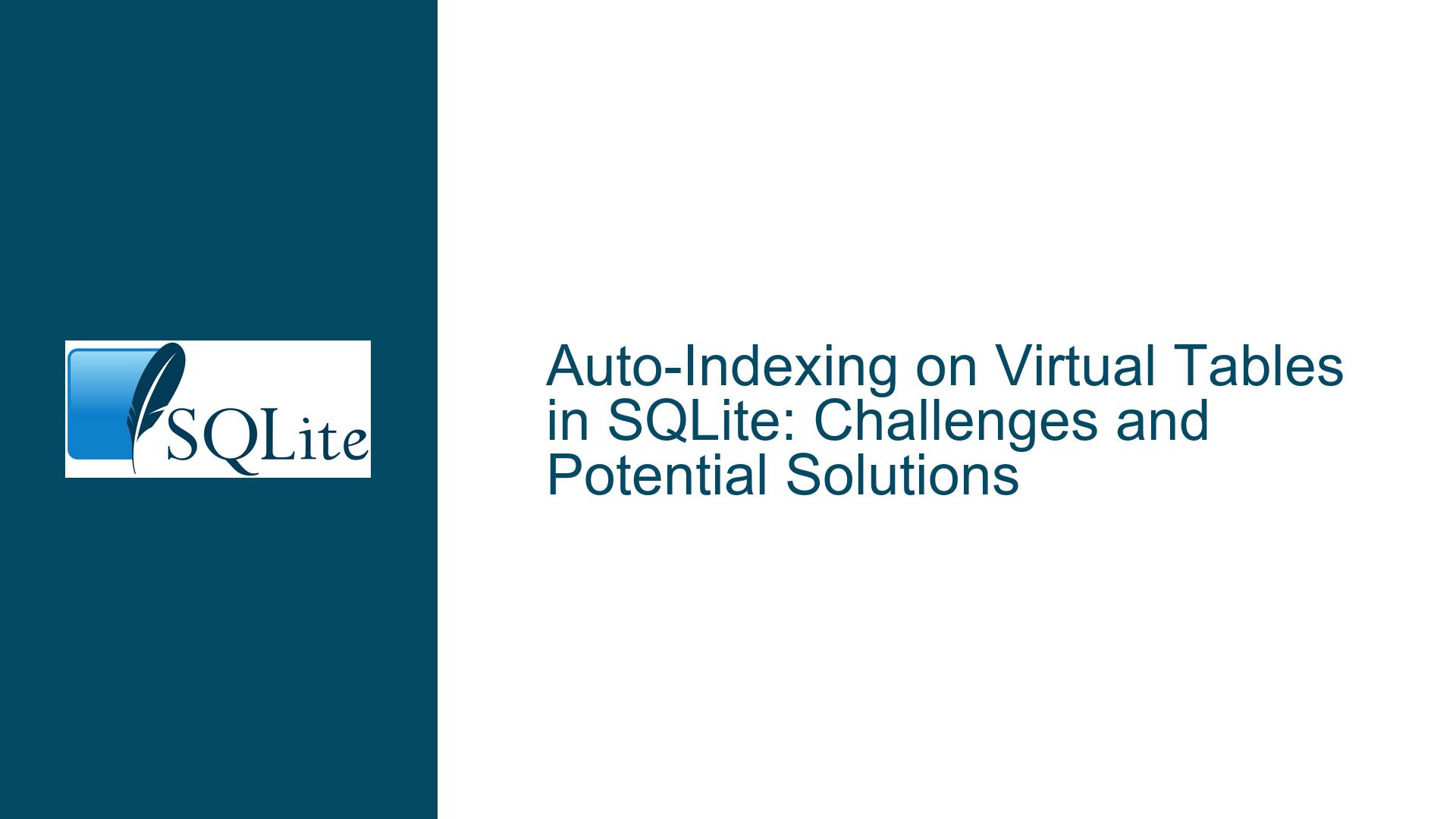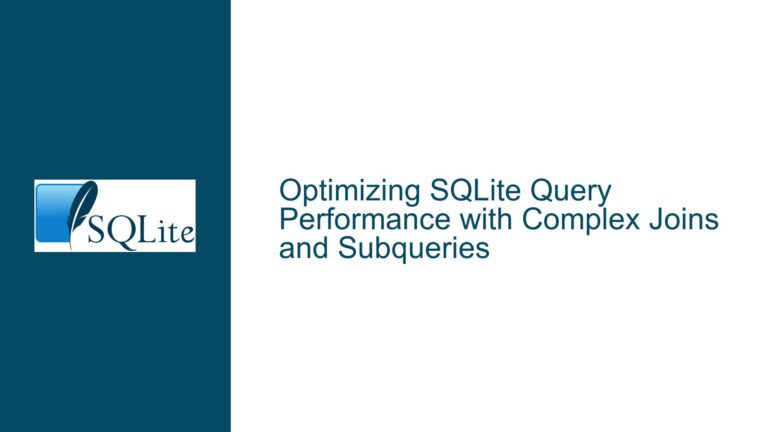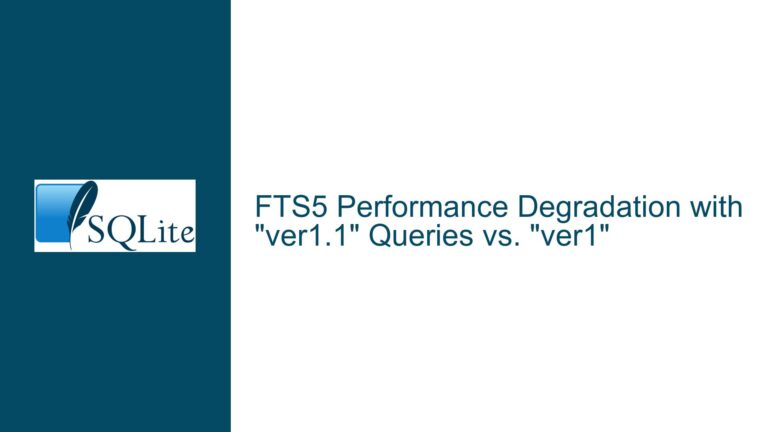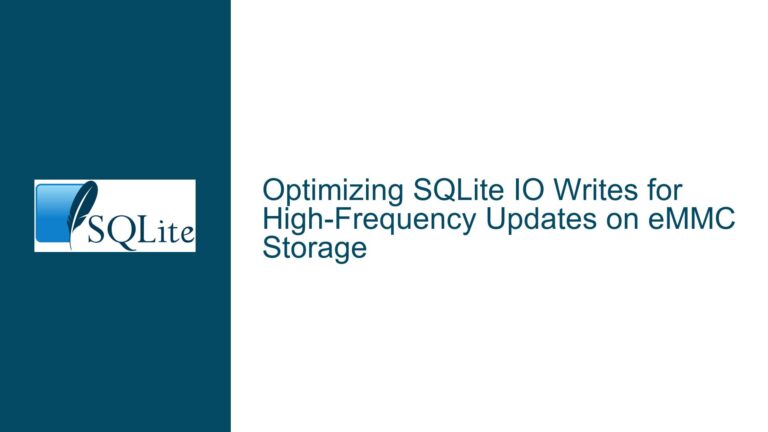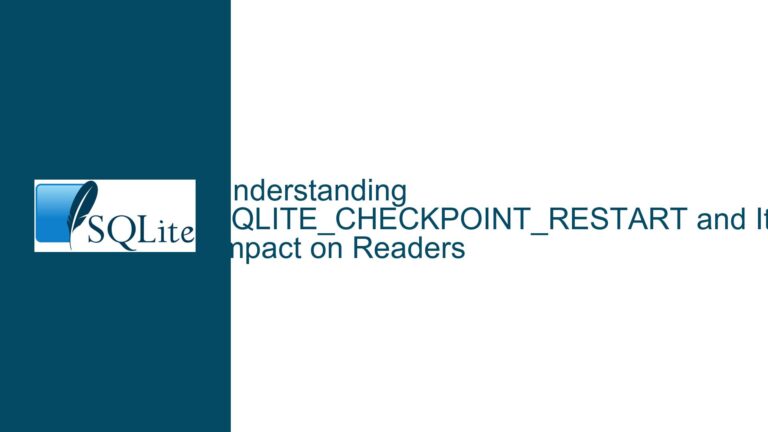Auto-Indexing on Virtual Tables in SQLite: Challenges and Potential Solutions
The Nature of Virtual Tables and Auto-Indexing in SQLite
Virtual tables (VTabs) in SQLite are a powerful feature that allows developers to define custom table-like structures backed by external data sources or algorithms. Unlike traditional tables, VTabs do not store data directly in the database file. Instead, they rely on callback functions (such as xBestIndex, xFilter, and xNext) to provide data dynamically. This dynamic nature introduces challenges when SQLite attempts to optimize queries using features like auto-indexing.
Auto-indexing is a performance optimization technique where SQLite creates temporary indexes during query execution if it determines that doing so would improve query performance. These indexes are typically built for traditional tables, where the data is static and predictable within the scope of a query. However, the dynamic and potentially non-deterministic nature of VTabs complicates this process. For instance, a VTab might represent a live feed of data (e.g., system processes or real-time sensor readings), where the content changes frequently and unpredictably. In such cases, creating an index would be futile because the indexed data could become stale before the query completes.
The core issue is that SQLite has no inherent mechanism to track changes in VTabs or to guarantee the consistency of their data. This limitation makes it impossible for SQLite to safely and effectively create auto-indexes for VTabs in their current form. However, the discussion explores potential solutions, such as introducing a "deterministic" flag for VTabs, which would allow developers to explicitly indicate when a VTab’s data is stable and suitable for indexing.
Challenges with Deterministic Virtual Tables and Indexing
The concept of a "deterministic" VTab is appealing but raises several technical and philosophical questions. A deterministic VTab would promise that its data remains consistent within a defined scope, such as a single query, transaction, or connection. This promise would enable SQLite to create temporary indexes without risking data inconsistency. However, implementing this feature requires addressing several challenges.
First, the definition of "deterministic" must be precise. Does it mean that the VTab’s data is immutable for the duration of a query, a transaction, or the entire connection? For example, a VTab backed by a CSV file might be considered deterministic if the file is locked during query execution, preventing external modifications. However, this approach introduces complexity, as the VTab must manage file locks or other mechanisms to enforce data consistency.
Second, even if a VTab is deterministic, SQLite must decide where to store the temporary indexes. Traditional indexes are stored in the database file, but this approach is unsuitable for VTabs because their data is not part of the database. Storing indexes in memory or a temporary database (temp.) is a possible solution, but it raises questions about performance and resource management. For instance, memory-based indexes might consume significant resources for large datasets, while temporary databases could introduce additional I/O overhead.
Third, the VTab must provide a mechanism for SQLite to track changes to its data. If the VTab’s content changes outside of SQLite’s control (e.g., due to external updates), the indexes must be updated or invalidated to maintain consistency. This requirement adds complexity to the VTab implementation, as it must notify SQLite of changes through callbacks or other mechanisms.
Finally, there is the question of whether SQLite should handle indexing for VTabs at all. Some argue that VTabs should manage their own indexing internally, using the xBestIndex method to optimize queries. This approach gives developers full control over indexing but requires a deep understanding of SQLite’s query planning and indexing mechanisms. Introducing auto-indexing for VTabs would shift some of this responsibility to SQLite, potentially simplifying VTab development but also increasing the risk of misbehavior if the VTab fails to uphold its deterministic promises.
Potential Solutions and Implementation Strategies
Despite the challenges, several potential solutions and implementation strategies have been proposed to enable auto-indexing for VTabs. These solutions aim to balance the benefits of automatic indexing with the need for flexibility and control over VTab behavior.
1. Deterministic Flag for Virtual Tables
One approach is to introduce a "deterministic" flag that VTabs can use to indicate their data is stable and suitable for indexing. This flag could be set during the xCreate or xConnect methods using a new SQLite API function, such as sqlite3_vtab_deterministic(). Alternatively, the flag could be specified in the virtual table declaration using a DETERMINISTIC keyword, similar to how deterministic functions are declared.
When a VTab is marked as deterministic, SQLite could create temporary indexes during query execution, just as it does for traditional tables. These indexes would be stored in memory or a temporary database and would remain valid for the duration of the query or transaction, depending on the scope defined by the deterministic flag.
2. Index Management and Storage
To address the issue of index storage, SQLite could provide options for storing temporary indexes in memory or a temporary database. Memory-based indexes would be ideal for small datasets, while temporary databases could handle larger datasets with minimal impact on performance. The choice of storage location could be configurable, allowing developers to optimize for their specific use case.
For example, a VTab backed by a CSV file might use memory-based indexes to avoid the overhead of temporary database files. In contrast, a VTab representing a large external dataset might benefit from the durability and scalability of a temporary database.
3. Change Tracking and Index Invalidation
To ensure index consistency, VTabs must provide a mechanism for tracking changes to their data. This could be achieved through new callback methods, such as xChangeNotify, which would allow the VTab to notify SQLite of changes to its data. When a change is detected, SQLite could invalidate the affected indexes or update them to reflect the new data.
For example, a VTab representing system processes might use operating system APIs to monitor process creation and termination. When a change is detected, the VTab would call xChangeNotify to inform SQLite, which would then update or invalidate the relevant indexes.
4. Integration with Query Planning
To integrate auto-indexing with SQLite’s query planning, the xBestIndex method could be extended to support index-based optimizations. When a VTab is marked as deterministic, SQLite could pass additional information to xBestIndex, such as the estimated cost of creating a temporary index. The VTab could then use this information to decide whether to allow auto-indexing or to handle indexing internally.
For example, a VTab representing prime factors might determine that creating a temporary index is unnecessary for small inputs but beneficial for large inputs. The VTab could communicate this decision to SQLite through xBestIndex, allowing SQLite to optimize the query plan accordingly.
5. Use Cases and Benefits
Enabling auto-indexing for VTabs would unlock new use cases and improve performance for existing ones. For example, VTabs backed by static files (e.g., CSV or Parquet) could benefit from automatic indexing without requiring manual index creation. Similarly, VTabs representing complex calculations (e.g., prime factors) could use temporary indexes to optimize repeated queries.
The benefits of auto-indexing would be particularly significant for VTabs that are read-only or have infrequent updates. By offloading indexing to SQLite, developers could focus on implementing the core functionality of their VTabs without worrying about the complexities of query optimization.
In conclusion, while auto-indexing for VTabs presents significant challenges, it also offers exciting opportunities to enhance SQLite’s flexibility and performance. By introducing a deterministic flag, improving index management, and integrating with query planning, SQLite could provide a robust solution for optimizing queries on virtual tables. However, careful consideration must be given to the technical and philosophical implications of these changes to ensure they align with SQLite’s design principles and meet the needs of developers.
